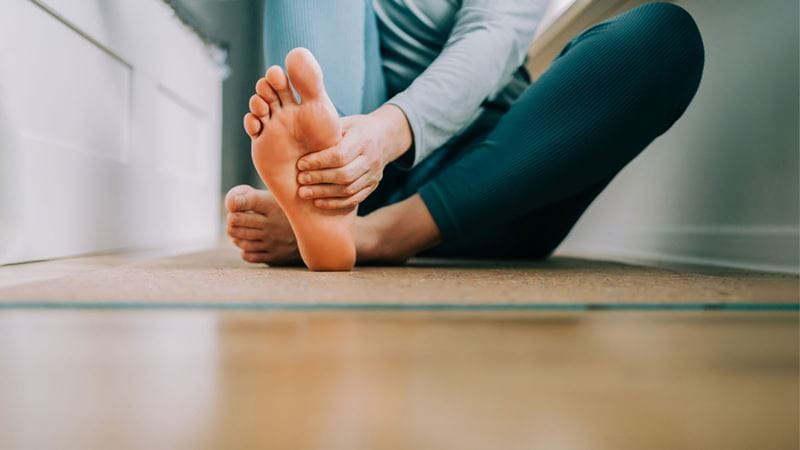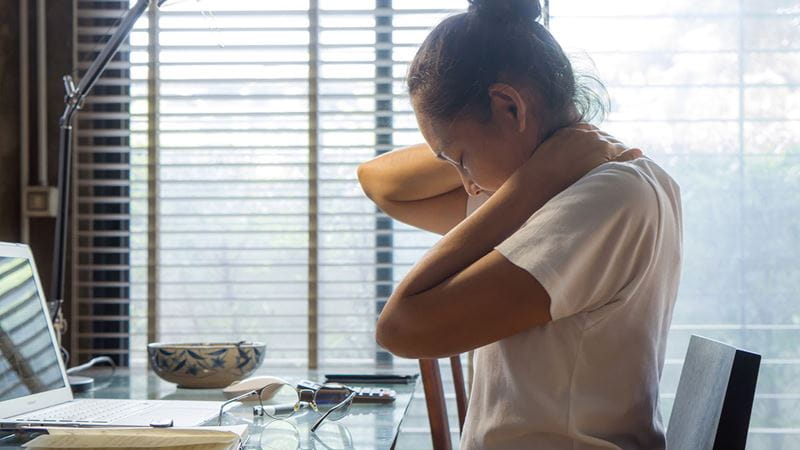Blog article
Understanding lower back pain: What’s causing it and how to find relief

With around 4 million Australians living with back pain, it’s one of the most common health issues in the country.1
Whether it’s a dull ache after a long day at your desk or a sharp twinge when you bend over, lower back pain can seriously impact your daily life. But there’s good news: most back pain isn’t caused by anything serious and there are ways to manage it.
In this blog, we’ll break down what lower back pain is, what might be causing it, and how things like posture, muscle strength, and even lack of physical activity can play a role.
What is lower back pain?
Lower back pain, also known as lumbar pain, refers to discomfort or pain felt in the area of the spine below the ribs. This region, called the lumbar spine, supports much of the upper body’s weight and is involved in nearly every movement you make. Because of its central role in mobility and posture, the lower back is particularly vulnerable to strain and injury.2
Common causes of lower back pain
Lower back pain doesn’t just appear out of thin air. It’s usually your body’s way of saying something’s off, whether it’s posture, movement, or muscle strength. Common causes of lower back pain include:2
- Muscle or ligament strain: Repeated heavy lifting or a sudden awkward movement can strain back muscles and spinal ligaments.
- Poor posture: Slouching or sitting for long periods, especially with inadequate back support, can lead to muscle fatigue and pain.
- Lack of physical activity: A sedentary lifestyle weakens the muscles that support your spine, making you more prone to pain.
- Frequent bending, twisting, or lifting: These movements, especially when done incorrectly or repetitively, can stress the lower back.
- Weak core muscles: Insufficient strength in your abdominal and back muscles can reduce spinal support and increase the risk of injury.
- Being overweight: Excess weight puts additional strain on your lower back, especially during movement or prolonged standing.
- Spinal disc issues: Although less common, problems like herniated discs can cause pain by pressing on nearby nerves.
- Underlying conditions: Conditions such as scoliosis, osteoarthritis, or ankylosing spondylitis can also contribute to chronic lower back pain.
Understanding the triggers of low back pain is the first step to managing or even preventing it. So, stop hunching over your laptop, book in for that Pilates session, and pay attention to how you’re lifting that laundry basket (remember to bend those knees!).
What is sciatica (and how does it relate to lower back pain)?
If you’ve ever felt a sharp, shooting pain that starts in your lower back and travels down your leg, you might have experienced sciatica. This condition occurs when the sciatic nerve, which runs from your lower spine through your hips and buttocks and down each leg, is irritated or compressed.3
While sciatica is often linked to lower back pain, it can cause numbness, tingling, or weakness in the leg and foot. Most cases resolve over time, but staying active, maintaining good posture, and lifting safely can help prevent flare-ups. If you’ve been diagnosed and treated for sciatica for 4 weeks but your symptoms have not improved, it’s recommended to visit your GP.3
Does osteoporosis cause lower back pain?
Yes. Osteoporosis can be a hidden cause of lower back pain, especially in older adults and postmenopausal women. As bones become weaker and more brittle, even minor stress can lead to vertebral compression fractures, which often result in sudden or chronic lower back pain. These fractures may go unnoticed at first but can significantly impact mobility and quality of life.4
A study found that over 80% of patients with osteoporosis reported severe lower back pain, with risk factors including low BMI, menopause, sedentary lifestyle, and certain medications. If you’re experiencing persistent back pain, especially with these risk factors, it’s worth speaking to your doctor about a bone density scan.4
Role of back muscles and hip flexors in pain and posture
Your back and hips do a lot of behind-the-scenes work to keep you upright, balanced, and moving smoothly. But when certain muscles get weak or tight, your posture can suffer, and that’s when lower back pain often creeps in.5
- Back muscles: Deep muscles like the multifidus and erector spinae run along your spine and help keep it stable. Think of them as your spine’s support crew (yes, I’ve been watching Drive to Survive). If they’re weak or not firing properly, your lower back has to work harder, which can lead to strain and discomfort.
- Hip flexors: These are the muscles at the front of your hips that help you lift your knees and bend at the waist. When you sit for long periods (hello, desk jobs), your hip flexors can get tight. Tight hip flexors pull your pelvis forward, which can throw off your posture and put extra pressure on your lower back.
The good news? Strengthening your back muscles and stretching your hip flexors can make a big difference. It helps your body stay aligned, reduces tension, and keeps your spine better supported throughout the day.
How to relieve lower back pain
While there’s no quick fix for lower back pain, there are plenty of ways to ease the discomfort and get back to doing what you love, whether that’s walking the dog, sitting through a meeting without fidgeting, or finally enjoying a full night’s sleep. Here are some practical, evidence-based ways to relieve lower back pain:2
- Keep moving (even if it’s tempting to stay still): Your back is built for movement. Gentle activity like walking, swimming, or water-based exercises can help reduce stiffness and improve circulation. Avoid resting for more than a day or two, it may seem counterintuitive, but staying active helps you recover faster.
- Apply heat: A warm compress or heat pack can help relax tight muscles, improve blood flow, and ease pain.
- Try targeted exercises: Stretching and strengthening exercises, especially those focused on your core, can support your spine and reduce the risk of future flare-ups. More on that later.
- Use pain relief wisely: Over-the-counter medications like NSAIDs (e.g. ibuprofen) or paracetamol can help manage pain in the short term. But they’re not a long-term solution, and remember to always talk to your doctor first, as NSAIDs can have side effects.
- Check your posture: Whether you’re working at a desk or scrolling on the couch, poor posture can strain your lower back. Use lumbar support, adjust your seat height, and take regular breaks to stretch and reset.
- Manage stress and emotions: Chronic pain can take a toll on your mental health. Mindfulness, relaxation techniques, and even talking to a psychologist can help you cope and feel more in control.
- Seek professional support: A physiotherapist can tailor a treatment plan to your needs, and your GP can help rule out any underlying conditions. While more than 9 out of 10 cases of back pain are not caused by a serious medical problem6, if your pain isn’t improving after a few weeks, it’s worth checking in.
Check out our blog, Exercises and stretches for lower back pain, which covers specific exercises and stretches that can help strengthen your back and ease pain.
What about spinal fusion for lower back pain?
For most people with back pain, surgery isn’t necessary, and often isn’t helpful. As we mentioned earlier, as more than 9 out of 10 cases of back pain are not caused by a serious medical problem, pain will improve with time, movement, and simple treatments.6 Back surgery is usually only considered when there’s a clear structural issue, like nerve compression, that hasn’t responded to other treatments.7
For non-specific back pain, where no exact cause is found, staying active, managing stress, and maintaining a healthy weight are often more effective than surgery. That’s why most experts recommend avoiding surgery unless it’s absolutely necessary and guided by a specialist’s advice.7,8
How HBF can help
If you have eligible extras cover with HBF, you may be able to claim benefits for services that support managing back pain, such as:
- Physiotherapy: A physio can assess your condition, provide targeted exercises to strengthen your back, and help you maintain mobility while reducing discomfort.
- Exercise physiology: Get expert guidance on physical activity tailored to your needs, focusing on improving your strength, flexibility, and overall fitness to support your spine.
- Remedial massage: Recover with massages designed to ease muscle tension, reduce spasms, and alleviate back pain.
- Psychology: A psychologist can help you develop strategies to manage stress effectively, promoting better mental and physical health.
- Nutrition and dietetics: A dietitian can provide advice on a balanced diet to support weight management and overall wellness.



